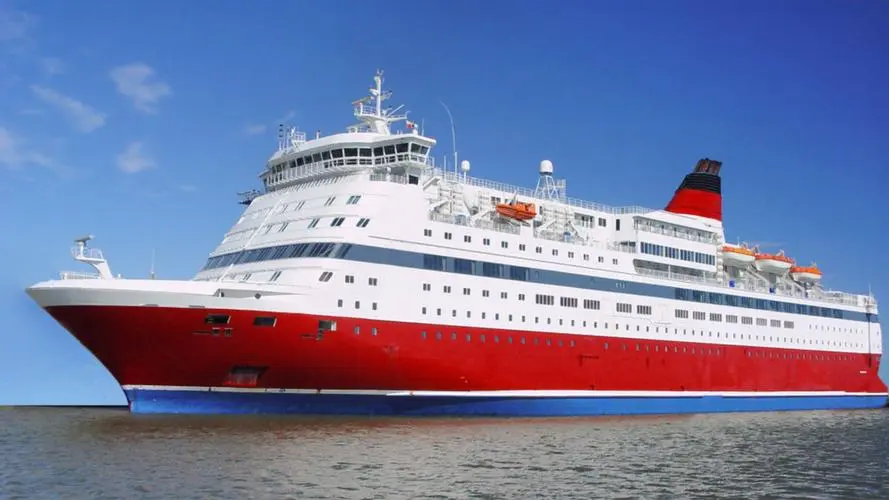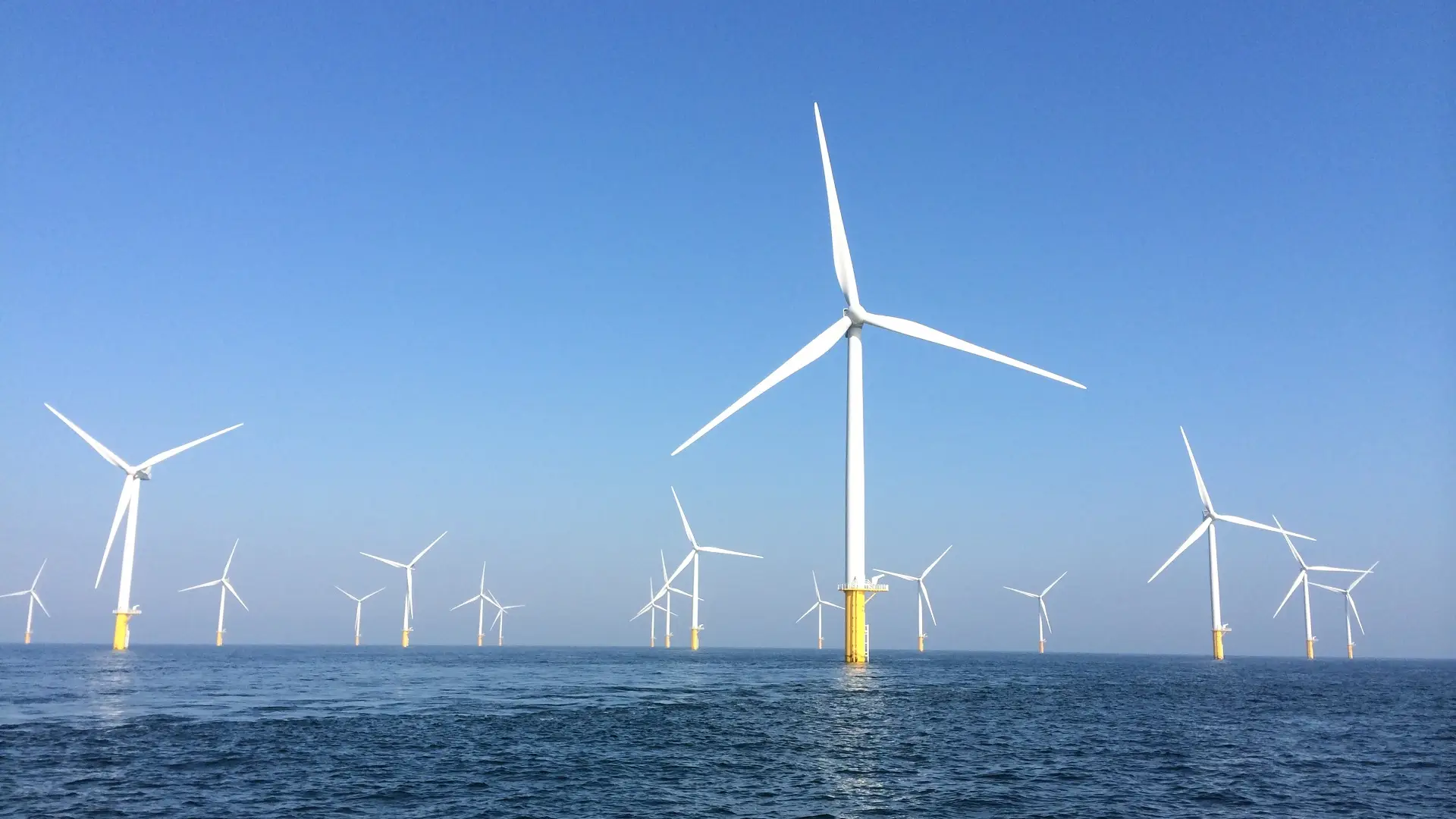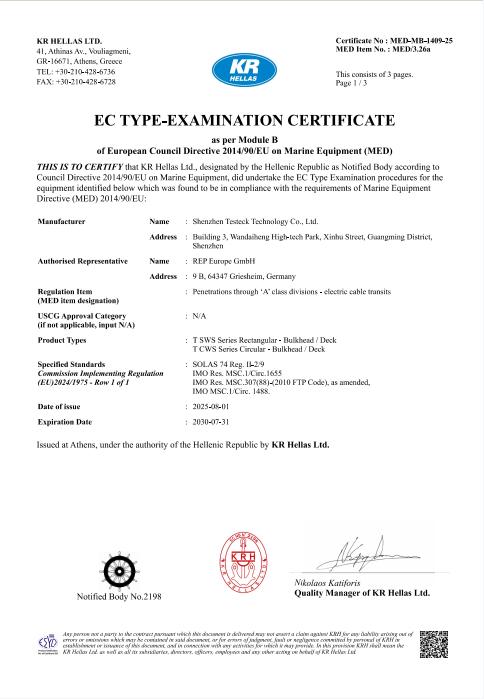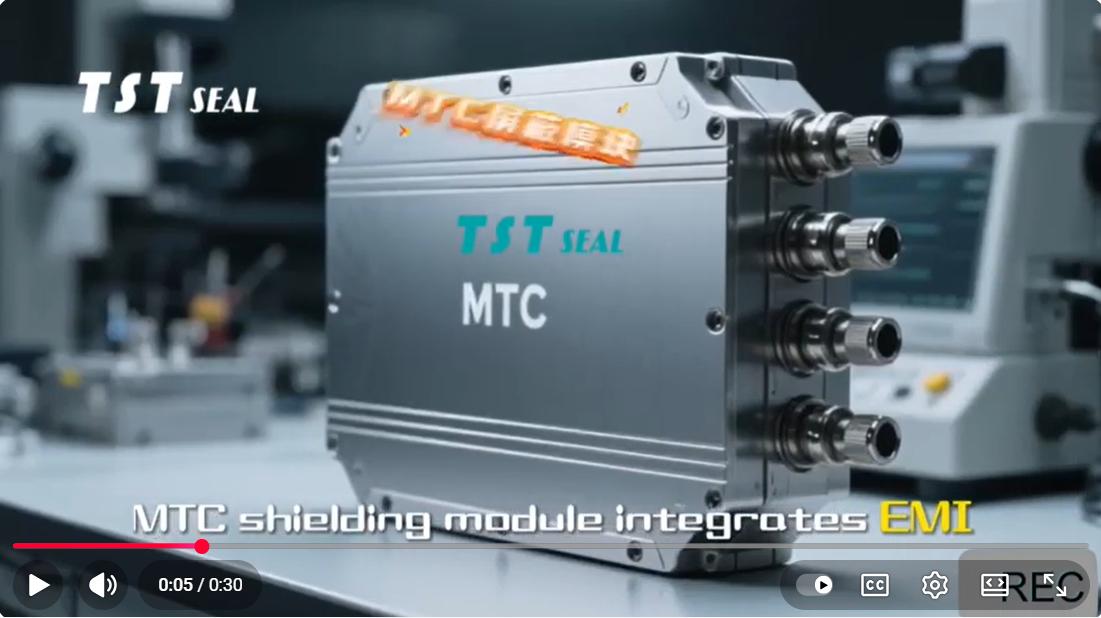
TST Seal :
- Fireproof
- Cable fixinAg
- Watertight
- Airtight
- Dustproof
- Noise reduction
- Vibration reduction
- Pressure resistance
- Corrosion resistance
- EMI/EMP
- Pest & rodent resistance
Related Articles
- circular seal (7)
- flange sealing (1)
- industrial sealing (2)
- MCT Transit Sealing System (2)
- rectangular seal (34)
- sealing modules (31)
- sealing solution (12)
Material and performance analysis of TST seal's new ship sealing module

Material selection and performance testing of ship sealing modules are the key to ensuring their long-term reliable operation in complex marine environments.
With more than 30 independent intellectual property rights and core patent technologies, it is a leading brand leading the domestic innovation of variable diameter module sealing system technology, and a pioneer in the industrial wall-penetrating hydropower and rail transit industries. It serves well-known domestic companies such as State Grid, Three Gorges Group, and China Railway Construction, and has become the industry’s first choice with modular design and multiple protection performance.
Next, TST SEAL will explain in detail the performance advantages and characteristics of TST SEAL’s new ship sealing module materials from two aspects: material properties and test methods.
- Material properties and applications of ship sealing modules
- Polymer materials
Polymer materials have become the first choice for ship sealing due to their light weight, corrosion resistance and excellent elasticity, including:
Rubber materials:
Nitrile rubber (NBR): Excellent oil resistance, suitable for fuel system and hydraulic system sealing, but limited temperature resistance (-30°C to 100°C).
Fluororubber (FKM): High temperature resistance (-20°C to 250°C) and strong chemical stability, often used for sealing in high temperature areas of the engine compartment.
Silicone rubber (VMQ): Excellent weather resistance, can be used in the range of -60°C to 300°C, suitable for hatch covers and hull gap sealing.
Plastic materials:
Polytetrafluoroethylene (PTFE): Very low friction coefficient (0.04), outstanding corrosion resistance, suitable for high-pressure valves and rotating shaft seals.
Polyurethane (PU): Excellent wear resistance, often used for dynamic seals (such as steering gear moving parts), but the temperature resistance range is narrow (-30°C to 100°C).
Composite materials:
Graphite/metal composite gasket: Combining the strength of the metal skeleton with the sealing of expanded graphite, suitable for high-temperature and high-pressure pipelines (such as steam systems).
Carbon fiber reinforced composite material (CFRP): High strength and light weight, used for pressure-resistant seals of deep-sea equipment.
- Metal materials for ship sealing modules
Metal seals perform well under extreme working conditions:
Stainless steel (304/316L): Strong corrosion resistance, suitable for valve and flange sealing in seawater environment.
Titanium alloy: Low density and salt spray corrosion resistance, often used for sealing deep-sea exploration equipment.
Corrugated composite gasket: The metal corrugated skeleton is combined with non-metallic filling materials (such as expanded graphite), which can withstand 400°C high temperature and 25MPa pressure, and is widely used in drilling platform high-pressure systems.
- New materials and technologies
Self-healing materials: Automatically repair microcracks through microcapsule technology or dynamic covalent bonds to extend the life of the seal.
Nano-modified materials: Such as graphene/rubber composite materials, improve wear resistance and tear resistance.
Environmentally friendly materials: Use halogen-free flame retardants and recyclable polymers to meet international environmental regulations (such as the IMO MARPOL Convention).
- Performance test methods for ship sealing modules
- Basic performance test
Air tightness test:
Bubble method: observe bubble generation by immersion under low pressure (0.1–10 kPa), suitable for initial inspection of valves and sealing rings.
Pressure decay method: evaluate the sealing performance by monitoring the pressure change in the closed system (such as leakage rate <0.1% per hour).
Water tightness test:
Water spray test: simulate wave impact (ISO 20653 standard) to verify the sealing ability of the hatch cover under surge conditions.
Immersion test: immerse in salt water for more than 24 hours to detect material corrosion and leakage.
- Extreme environment simulation test
Temperature alternation test:
High and low temperature cycle: cycle between -40°C and 120°C (ASTM D2000) to verify the matching of material thermal expansion coefficient.
Ultra-low temperature test: simulate liquid oxygen environment (-196°C) to evaluate the risk of embrittlement of sealing materials.
Salt spray test (ASTM B117):
Continuous salt spray corrosion (5% NaCl solution) for 500 hours to detect surface rust and seal performance degradation.
Dynamic pressure shock test:
Deep sea high pressure simulation: 5 Hz alternating load test (ISO 14644-1) at 20 MPa pressure to verify the creep resistance of the sealing structure.
- Dynamic seal life evaluation
Reciprocating wear test:
Simulate the friction between the seal and the moving parts (such as PTFE seals> 5×10⁴ cycles) to quantify the relationship between wear rate and leakage rate.
Compression permanent deformation test (ISO 1817):
Measure the rebound performance of materials such as fluororubber after long-term compression (the standard requires a deformation rate of <15%) to predict the aging failure threshold.
Fatigue life test:
Use a vibration table to simulate hull vibration (frequency 10–200 Hz) to evaluate the reliability of seals under long-term dynamic stress.
- Nondestructive testing and intelligent monitoring
Fluorescent probe coating:
Coating photoluminescent material on the sealing interface to locate the micron-level leakage path in real time through the change of fluorescence signal intensity.
Fiber optic sensing technology:
Distributed fiber optic sensors are embedded in the sealing structure to dynamically monitor temperature, pressure distribution and micro deformation.
Acoustic emission monitoring:
Use acoustic emission sensors to detect crack propagation inside the seal (sensitivity 0.1mL/min) and warn of failures in advance.
III. Typical application scenarios and test standards of ship sealing modules
Application scenarios | Material selection | Key test items | Related standards |
Hatch cover seals | Silicone rubber, EPDM | Air tightness test (ISO 17339), salt spray test (ASTM B117) | ISO 17339, ASTM B117 |
High-pressure pipeline flange seals | Metal spiral wound pads, corrugated pads | Temperature alternation test (-40°C to 400°C), dynamic pressure shock test (20 MPa) | ASME B16.20, EN 1514-1 |
Steering gear dynamic seals | Polyurethane, PTFE | Reciprocating wear test (5×10⁴ cycles), friction coefficient test (ASTM D1894) | ISO 6129, ASTM D1894 |
Deep-sea equipment seals | Titanium alloy, CFRP | Deep sea high pressure simulation test (20 MPa), ultra-low temperature test (-196°C) | ISO 14644-1, ASTM G31 |
Life raft sealing components | Butyl rubber, PVC coated fabric | Air tightness test (30kPa pressure for 24h), weather resistance test (UV aging for 720h) | GB/T 23263, ISO 4892-3 |
- Future development trend of ship sealing modules
- Intelligent materials: Develop sealing materials with self-sensing functions (such as TST SEAL’s sealing modules embedded with nanosensors) to achieve real-time leakage monitoring.
- Test standardization: Promote the unification of international standards (such as ISO and ASTM compatibility) to reduce repeated testing costs.
- Environmental compliance: Promote low-smoke, halogen-free, and degradable sealing materials to meet IMO 2020 sulfur emission limits and EU REACH regulations.
- Digital twin technology: Use simulation software to predict the performance of seals throughout their life cycle and optimize design iterations.
The material selection of ship sealing modules needs to comprehensively consider temperature resistance, corrosion resistance, mechanical strength and environmental protection requirements, and performance testing needs to cover multi-dimensional verification in static, dynamic and extreme environments. The combination of advanced material research and development and intelligent testing technology can significantly improve the reliability of ship sealing systems and provide protection for the safe operation of marine engineering. If you need sealing module products, please email TST SEAL and get free samples.







